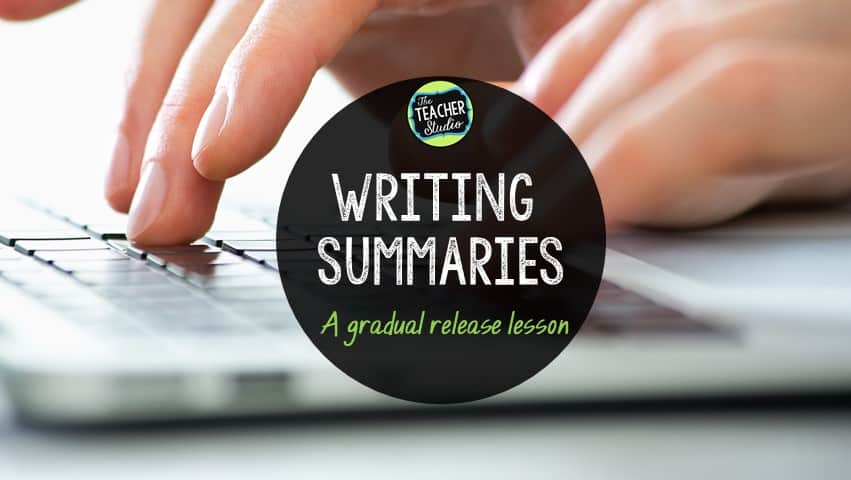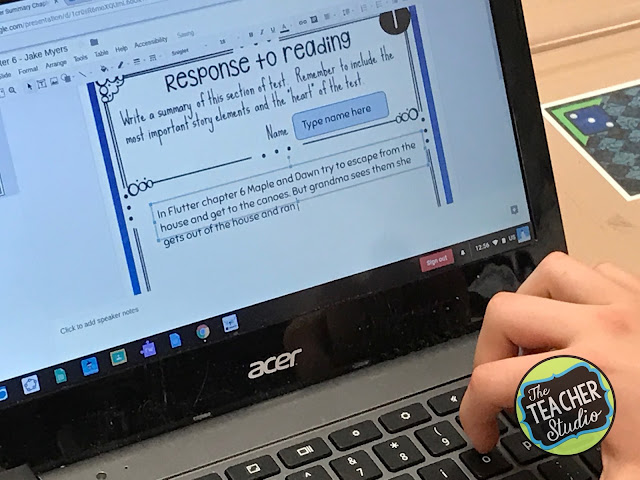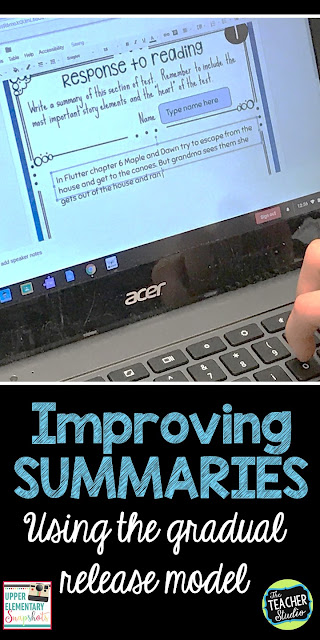
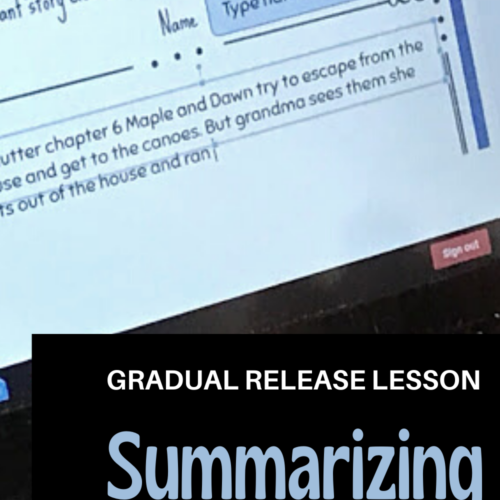
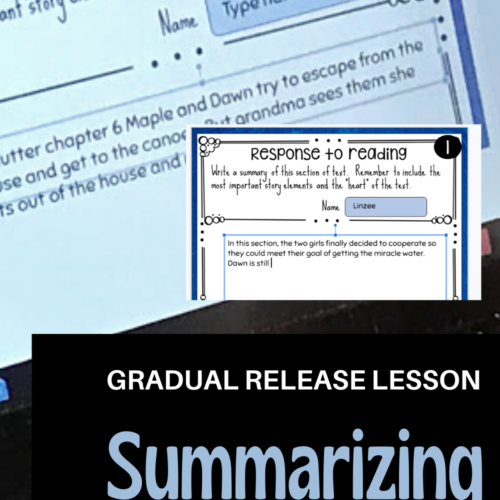
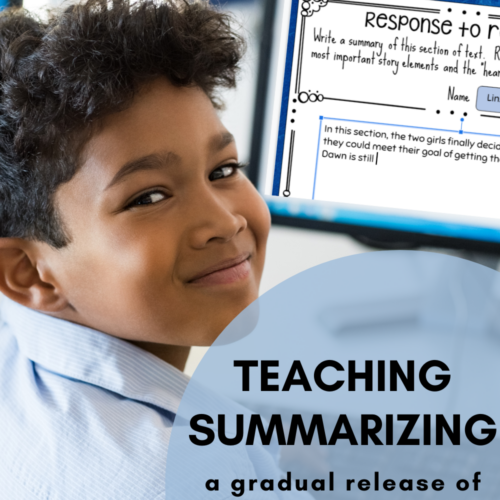

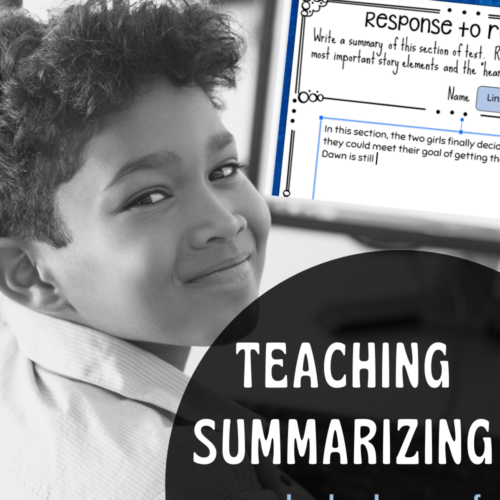
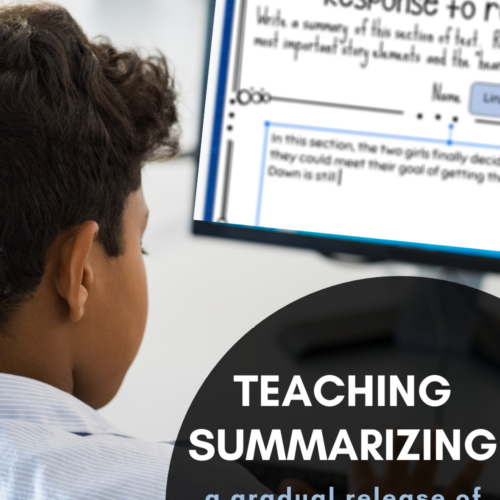
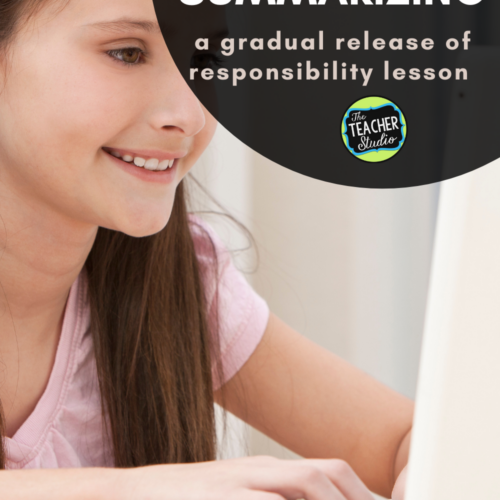

This is not what the gradual release was ever intended to be!
I am a firm believer in setting clear and coherent learning targets for students–and making them aware of them. Richard Stiggins likes to say, “Students can hit any target they can see that is holding still for them.” Pretty powerful, right? We need to make sure students know WHAT it is we want them to do–and that’s where the gradual release comes into play. (Interested in a set of reading learning targets to help guide your instruction? CLICK HERE!)
This became very evident to me earlier this year when I asked my students to write a summary of a chapter I had read aloud to them. Summarizing is one of our big standards in fourth grade so I wanted to get a handle on what they remembered from third grade. I certainly got my answer!
When reading through their “summaries”, I found retellings. I found opinion pieces. Interestingly, I found stories. I did NOT find summaries! If you teach upper elementary students–you know that writing summaries is HARD! In fact, I think many adults struggle with this concept.
Writing Summaries: Next Steps
It became evident to me that I was going to need to spend a great deal of time modeling, coaching, remodeling, recoaching, observing, sharing, and more. That “cyclical” use of the gradual release of responsibility model is what is so effective. Certainly, you can have the GRR model within any lesson (and should!), but having the GRR extend over weeks or even months on a complex concept can really help students see what the expectations are.
After I looked at the “summaries” early this year, I began to devise a plan to take us from “not so much” to “we got it”! Here are some of the things we did over the year:
*We clarified the difference between retelling and summarizing.
*We studied examples of summaries and retelling.
*I wrote summaries in front of the class with their suggestions. (Time-consuming but so worth it!)
*We wrote summaries in partners and then shared them with other partners.
*I took examples of summaries that we then sorted into categories (4, 3, 2, and “not yet”–based on our grading system)
*After that, I wrote examples of marginal summaries and asked students to help me improve them.
*I had students write their own summaries based on common texts (like read aloud books) and provided feedback based on what we had done in previous lessons.
It takes time…
And so on! As you can see, the gradual release process is woven through these activities. The process took many many repetitions, experiences, practices, and tons of feedback! I have used this GRR model to improve my students’ work on many writing topics this year…comparing and contrasting, writing about characters, writing opinion pieces, and so on.
The one thing that made this process so nice for me was involving technology–I could project summaries on the Smartboard, students could do their work quickly, I reduced paper use, yet still had a trail of progress. It was so much fun for students to look back at their earlier work and realize how far they had come–but it really took coaching, practice, and modeling.
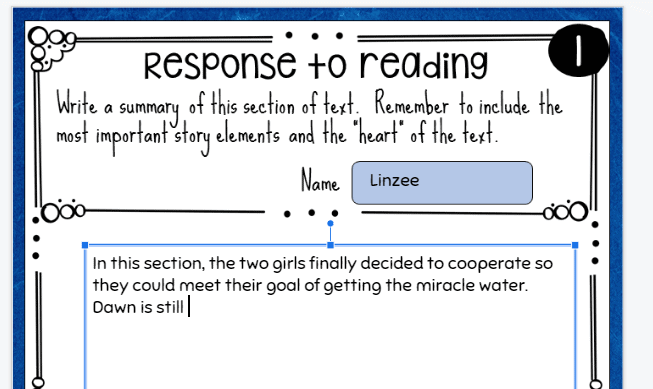
If you are interested in seeing more about how I use technology with my reading responses, just click HERE or any of the images above to see more. Have a great day and keep modeling!
Here’s some more help!
Graphic Organizers for Fiction Texts (Print and Digital)
Digital Response to Reading Activities
Digital Book Clubs for Any Book

